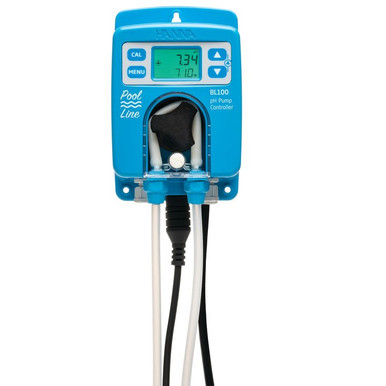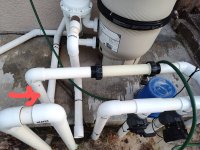Don't suspect anyone on TFP has tried one if these?
As a leader in pH and titration science, we help professionals and hobbyists with their everyday testing needs.

www.hannainst.com
Here's the rub, or pros and cons:
The IpH controller doesn't just share the power supply of the IC, it "talks" to the IC, and can control it. The IpH also monitors the IC. It displays the IC's settings, and can be used to adjust the IC's output setting in 1% increments. A stand alone IC's output can only be adjusted to 0, 2, 4, 6, 8, 10, 20, 40, 60, 80, 100% increments. If a Pentair pool automation controller is present, then it will override the IpH's control and allow 1% adjustments within the pool automation controller's interface.
But more importantly, the IpH and IC combo provides some important safeties:
(1) Whether a pool automation controller is present or not, when the IpH controller is ready to dispense, if first shuts down the IC's chlorine production, and then dispenses acid, and then restores the IC's functions. This is a major safety consideration, so that the IpH is not dispensing acid into your plumbing and pool while the IC is also dispensing chlorine into the plumbing and pool. The two can combine to produce a toxic gas. You would not want to be in the pool while both acid and chlorine are mixing together in your plumbing and being pumped into your pool through the returns!
(2) Because the IpH and IC share the same power supply, which is supposed to be wired such that it is not powered up unless the main filter pump is running, neither the IpH nor the IC can inject acid or chlorine into your pool unless there is power going to the pump.
(3) As a backup safety to #2, the IpH controller is also monitoring the IC's flow switch, and will not dispense acid if the flow switch is not closed (if the water is not actually moving through the plumbing). In a pump failure scenario, it's possible the IpH and IC could be powered up but the pump is not actually spinning. Without that flow switch safeguard, either the IC or the IpH would happily dispense chlorine gas or acid into a pipe full of stagnant water. This could result in a major catastrophe, even an explosion.
(4) Once the output settings of the the IpH and IC are established (a simple % number for each), then the IC and IpH do their thing throughout the runtime schedule. The IC dispenses every five minutes, the IpH dispenses once an hour. Which means your FC and pH are really stable throughout the runtime schedule, which is typically your daytime swim time hours.
If you go with a third party pump, you're going to want to recreate all of the safeties and niceties the combo provides, which means wiring it correctly to the filter pump, a flow switch somewhere in the plumbing wired in correctly, a timer that can not only dispense regularly throughout the day, but somehow not dispense while your IntelliChlor is producing or the water isn't flowing, etc!
While it's possible to use a third party pump and timer, you're never going to get to the level of safety and convenience provided by the Pentair combo.
So, the cons...
(1) The IpH also monitors the IC's temperature sensor, and when the pool water gets too cold for the IC to produce chlorine, the IpH will not dispense acid. Why Pentair chose this "feature" is a mystery. I circumvented this issue with a trick of wiring, which I describe in the link I referenced above. My IC does stop producing in the winter, but my IpH dispenses all year long. In Florida, as long as your pool temp stays above ~53°, this won't be an issue for you.
(2) Because the two are so closely tied together, and share the same power supply, if something goes kaflooey with any of the three (IC, IpH or power supply), then you lose everything until fixed.
(3) The over-current problem with the IpH controller is real, and will very likely cause you some trouble with an IC60. We devised a fix for it, but you'd have to deal with that at some point, as I described previously.
The IpH system has its flaws, but, IMO, they are far outweighed by the great engineering Pentair did combining the IC and IpH functions.

sunplay.com




